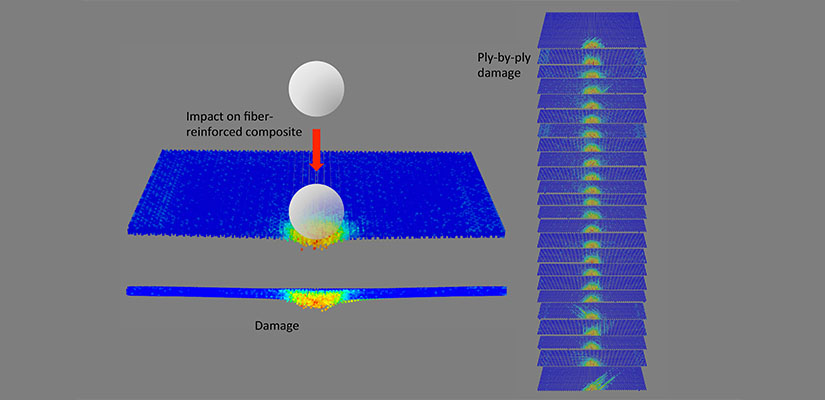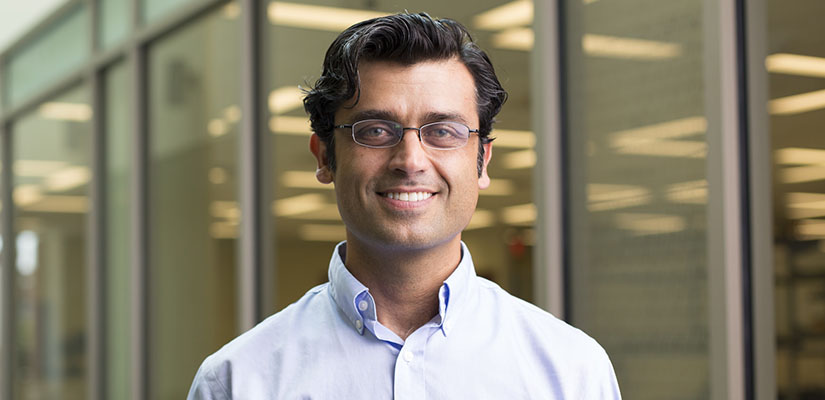Richmond, VA (March 6, 2017) - To explore more deeply into our solar system, NASA wants new spacecraft to be made of advanced ultra-high strength material — and has tapped a university-led team to deliver it.
The new NASA-sponsored multidisciplinary Space Technology Research Institute (STRI) will incorporate the work of Ibrahim Guven, Ph.D., assistant professor in the VCU School of Engineering Department of Mechanical and Nuclear Engineering, to ensure that this cutting-edge material won’t fail.
The STRI focuses on developing aerospace structural material for next-generation transit vehicles, habitats, power systems and other exploration systems. Guven is part of Ultra-Strong Composites by Computational Design (US-COMP), which is made up of 22 faculty members from 11 universities as well as industry partners and the U.S. Air Force Research Lab. The team, led by principal investigator Gregory Odegard, Ph.D., the Richard and Elizabeth Henes Professor of Computational Mechanics at Michigan Technological University, will receive up to $15 million over five years.
Odegard said, “We are fortunate to have the best researchers in their respective fields from across the country on the US-COMP team. Dr. Guven will be part of the team that will develop computational models to help speed up the material development.”
Gary Tepper, Ph.D., professor and chair of the Department of Mechanical and Nuclear Engineering, said, “Dr. Guven’s expertise in fracture and failure analysis of engineering systems using computational methods is widely recognized. His participation on this important NASA program will advance the understanding of high strength material performance in space applications.”
The group intends to deliver a composite material that makes use of engineered carbon nanotubes and will be much lighter—but much stronger—than what is currently available.
Guven said, “Whenever you talk about a spacecraft, especially a manned spacecraft, you have to talk about exit from and re-entry to Earth. We want to be able to make sure that the new material that this STRI is promising to deliver can have superior impact resistance and resistance to failure.”
Computational modeling allows researchers to predict, based on physics and mathematical formulations, whether under certain conditions the material will break, and where. “It provides a virtual laboratory,” Guven said. Being able to test different hypotheses quickly guides experimental work, saving money and time.

To analyze what would happen if an object struck a composite material, Ibrahim Guven, Ph.D., uses computational modeling to predict how the material would deform and sustain damage. On the left is a view of the overall damage to the composite material. A close-up view of the same impact, on the right, shows details of each layer of that material.
Barbara D. Boyan, Ph.d., dean of the School of Engineering, said, “VCU’s School of Engineering is excited to be able to contribute to this important initiative. Dr. Guven’s skills in non-destructive testing and modeling complex materials are well suited to meet the challenges of this new technology.”
Other members of the institute are from Florida State University, University of Utah, Massachusetts Institute of Technology, Florida A&M University, Johns Hopkins University, Georgia Institute of Technology, University of Minnesota, Pennsylvania State University and University of Colorado. Industry partners include Nanocomp Technologies and Solvay. The group will meet twice a year.
Funding for the institute comes from NASA’s Space Technology Mission Directorate, responsible for developing new technologies.
Another STRI, also receiving $15 million over five years, is called the Center for the Utilization of Biological Engineering in Space (CUBES). It seeks to develop technologies to allow mission crews to make their own fuel, materials, pharmaceuticals and food for long missions. The two institutes are the first such entities.
Guven said that as someone who is personally fascinated by space studies, he was looking forward to working on a NASA project. “This is very important for VCU,” he said. “It is very exciting.”
